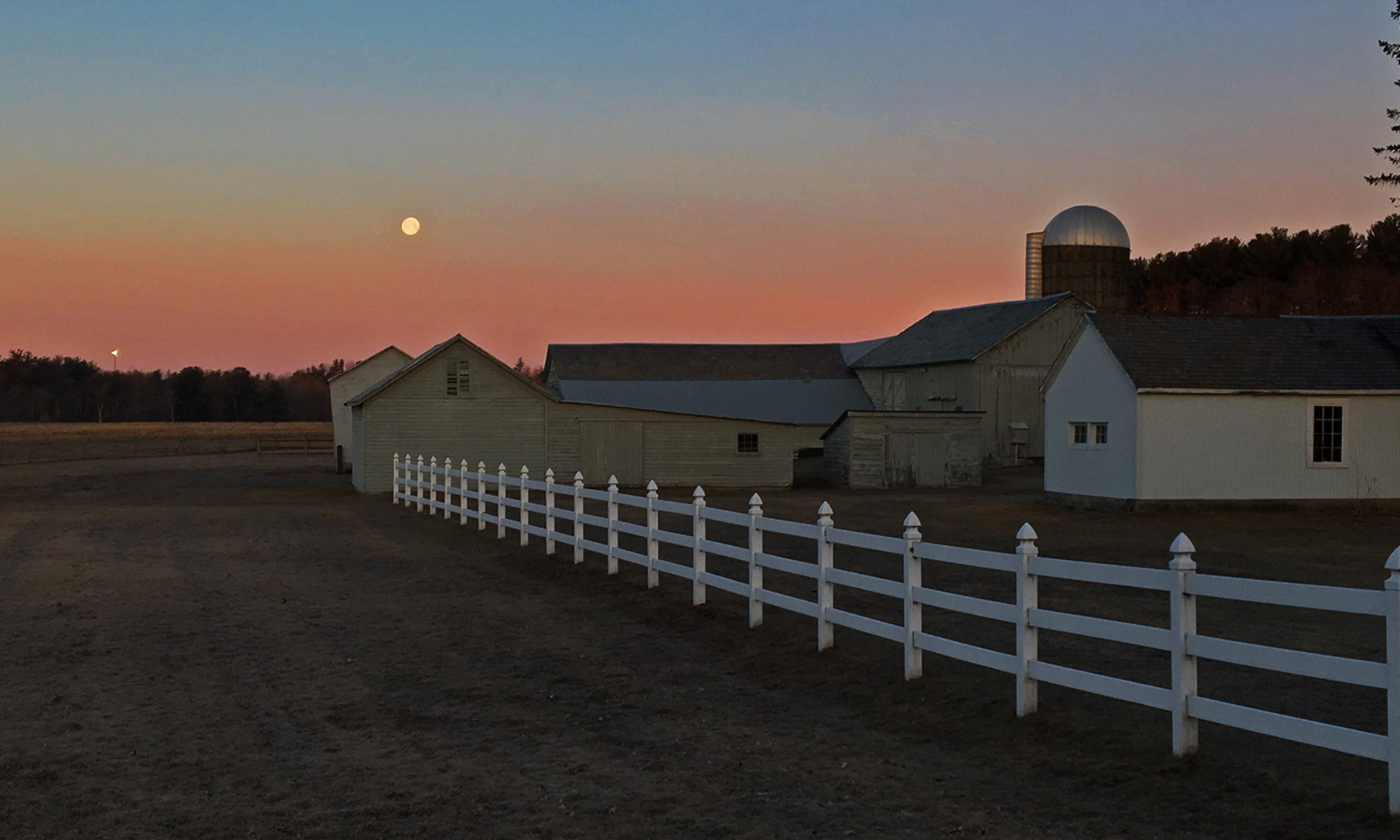As I said in most recent post, I have many many ideas for blogs in my head. Besides being Nature related, the other thing that they have in common is that they are still in my head and not in writing. The idea for today’s blog was kindled by the most recent snowstorm of Tuesday into Wednesday January 26 into 27. I took the trash and recycling out in early evening after perhaps 3-4 hours of snowfall. As if by magic, there were two sets of prints on the snow that had fallen into our carport. One was a rabbit, the other a squirrel. The rabbit was fresh in the family’s mind as we saw one munching under the bird feeders as we returned home after dinner with other family around 7 pm. It is likely that it was that rabbit that left the prints.
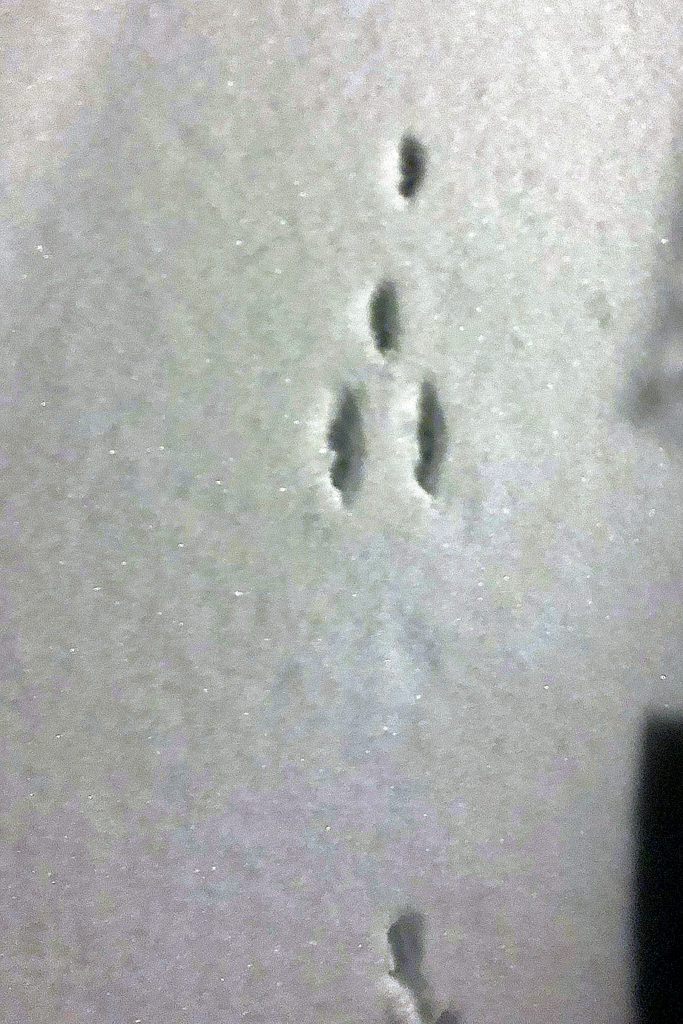
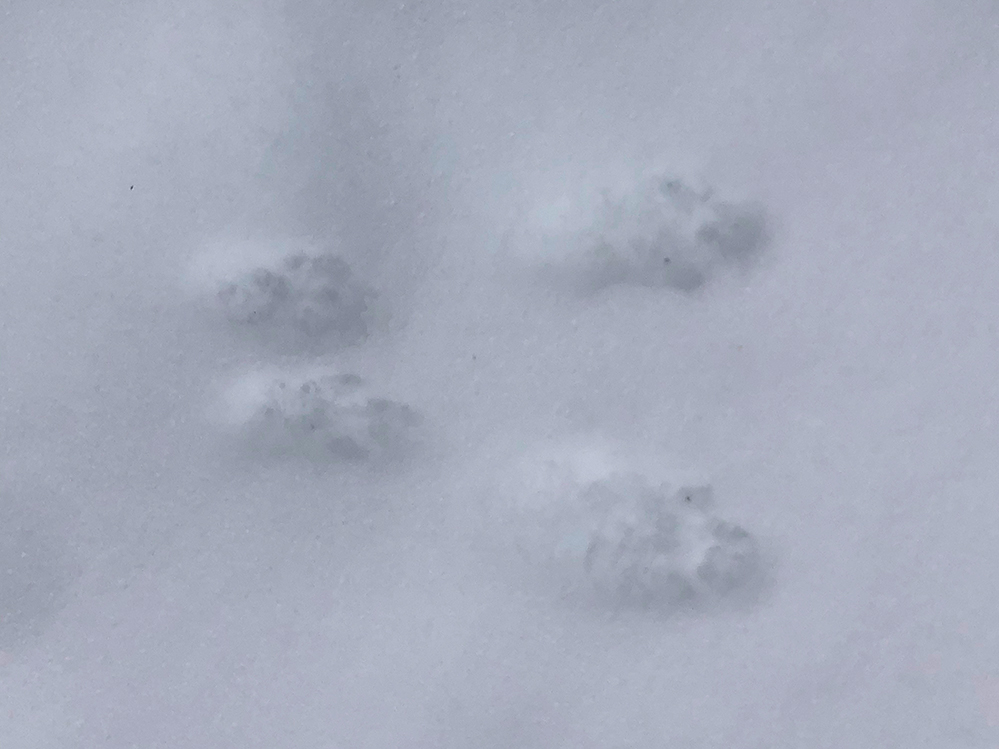
I have always been fascinated by tracking animals. It was an important feature of the self reliant woodsman/frontier hunter during the 1750s in the books our Dad read to us. They could read tracks, tell if a branch had been bent by a creature or a person passing, know which direction an animal was going. It isn’t my purpose to revive those stories, but I do want to share how I knew which animals they were and which direction they were going. I will also share a set of fox tracks I found the same day that I saw the Red Crossbills and plant remnants I wrote about last blog.
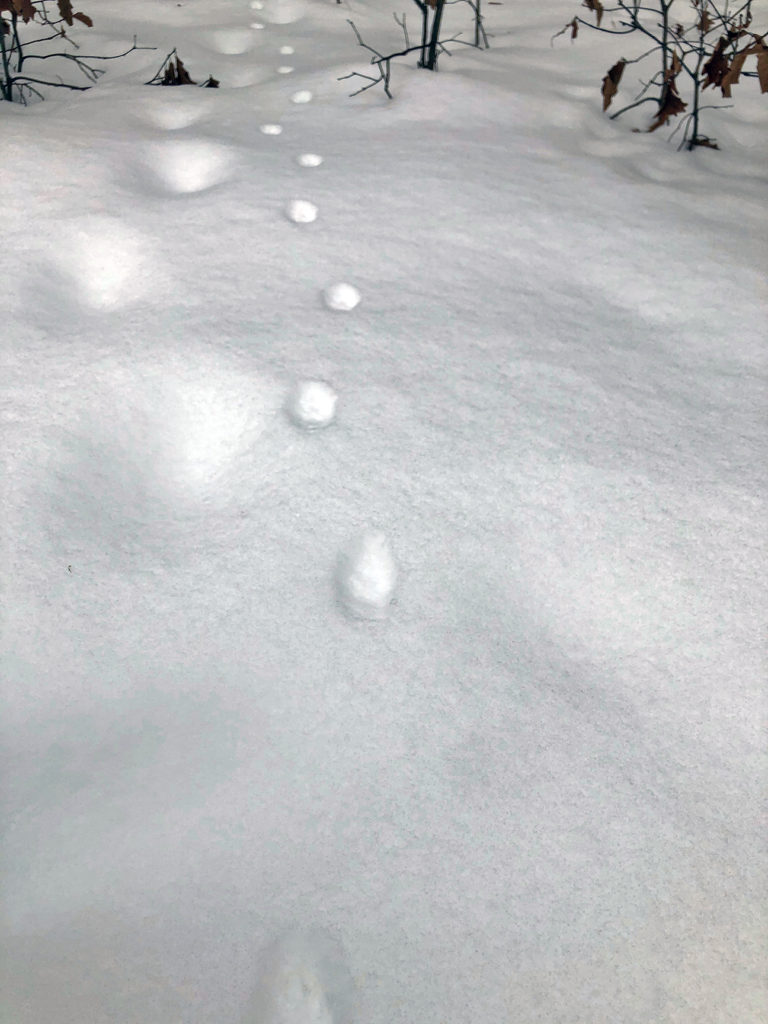
When I used to lead Nature walks for the New York State Department of Parks, Recreation and Historic Preservation between 1987-1989, I read a lot and spent a lot of time observing in Saratoga Spa State Park. One of my key resources were the Stokes Nature Guides by Donald and Lillian Stokes. A Guide to Nature in Winter and A Guide to Animal Tracking and Behavior were key resources as well as other naturalists in the NY Parks and DEC. But, as always, getting outside and observing is the best way. So, back to the evidence at the top. The rabbit jumps and lands with one front foot behind the other then the rear feet come over the front feet and push off again. This, in the photo, the hind feet indicate the direction the rabbit is going. We think of jumping with all four feet staying in position, but the rabbit needs to spring on again to the next jump. Squirrels are similar, except their front feet land next to each other and the hind feet come over and are prepared to jump. Another indication is that Squirrels often begin and end at tree trunks, rabbits don’t. The fox in the third picture is trotting right left right left towards us. The snow that fell on the tracks later dulled the edges, but the bigger part of each track is the front part of the paw, the thinner part, the back.
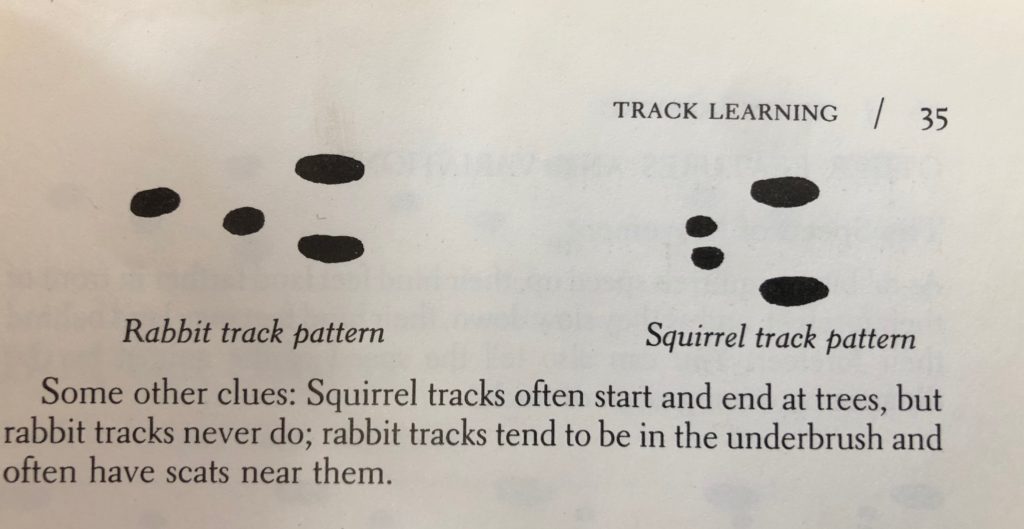
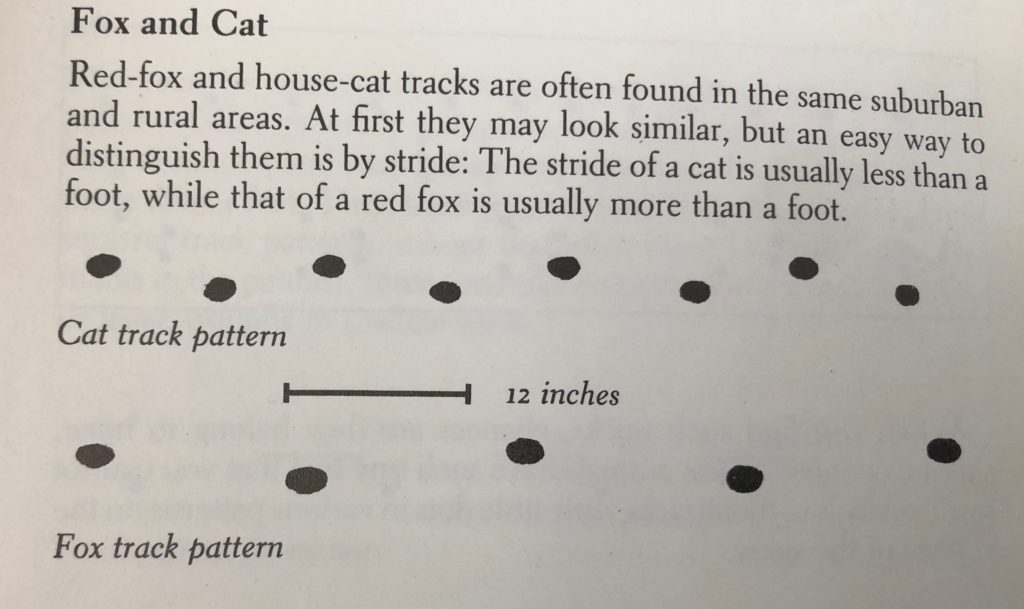
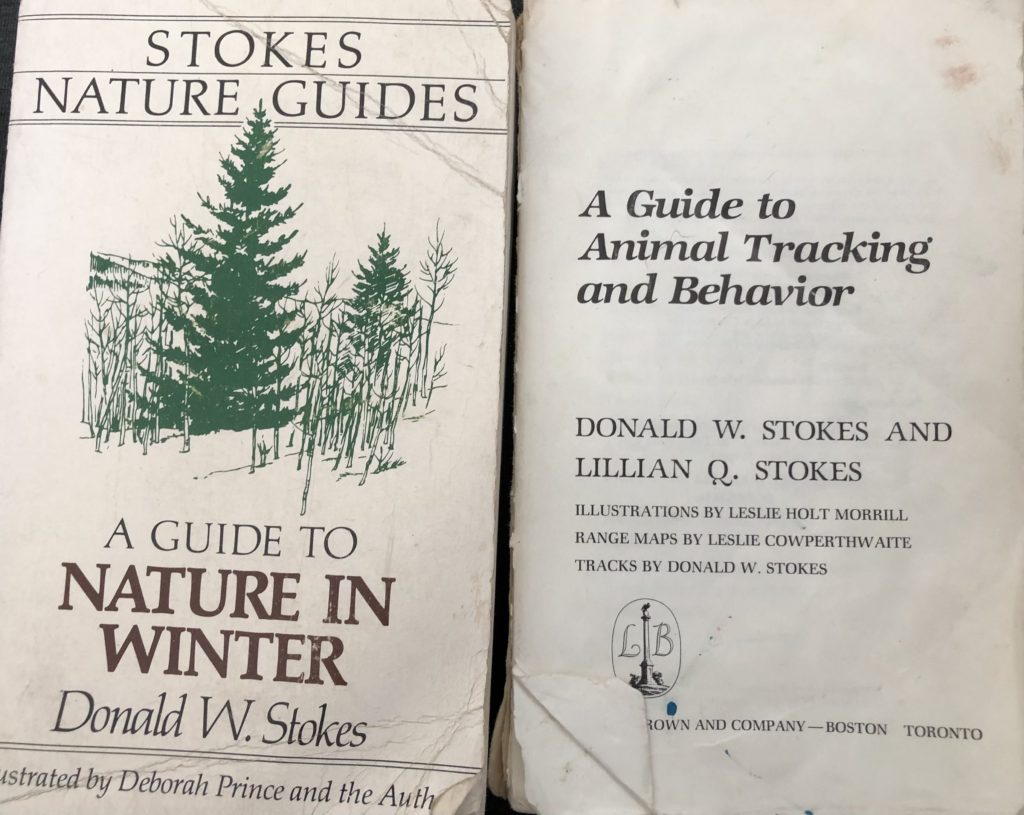
These quick drawings and text are borrowed from the Stokes Guide to Animal Tracking
The last thing I wanted to share is that the distance each set of tracks is from each other indicates the speed the animal is going. The rabbit was kind of hopping around our carport as was the squirrel. You can find them far apart and imagine the speed they are going. For big time drama, if you are lucky, you can see animals interacting, such as a fox chasing a rabbit.
As always, get out and observe!
